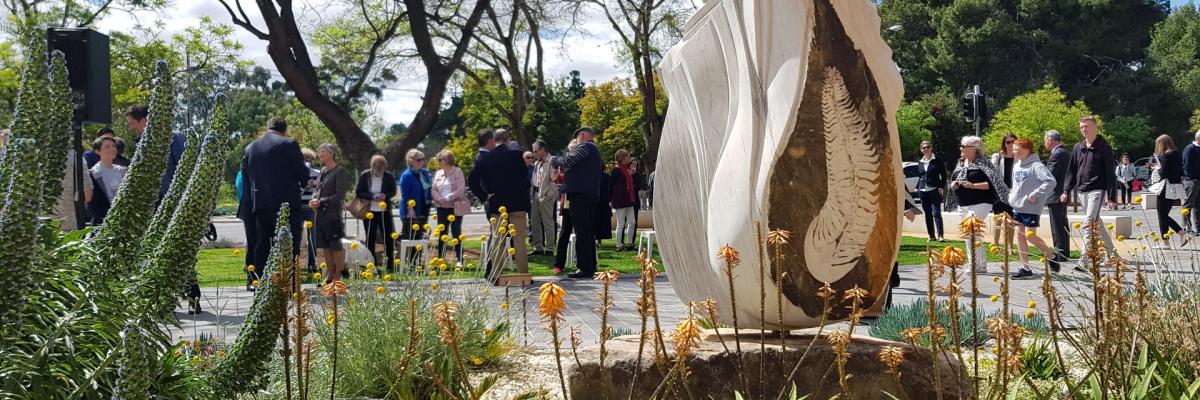Sculpture of iconic Ediacaran fossil unveiled
The legacy of University of Adelaide alumni and geological research was highlighted today with the unveiling on campus by Premier of South Australia, the Hon. Steven Marshall, of a sculpture celebrating the state’s fossil emblem, Spriggina floundersi.
Spriggina floundersi, named after outback legend, geologist, conservationist and University alumnus, Reg Sprigg, is recreated in Paris Creek marble by well-known South Australian sculptor, Silvio Apponyi, OAM.

This sculpture celebrates the Spriggina as one of the iconic Ediacaran fossils which were discovered by Dr Reg Sprigg in the Ediacara Hills of the Flinders Ranges in 1946. He recognised them as Pre-Cambrian multicellular organisms.
“This sculpture not only highlights South Australia’s unique geological heritage, but also the University of Adelaide’s proud history of research excellence in geology that continues today, and the contributions made to this heritage by many notable University alumni and staff,” says Acting Vice-Chancellor Professor John Williams.
“Today this sculpture adds value to our campus and our city; it’s part of our public realm project, reinvigorating our campus with spaces that welcome and engage our students, staff and the wider community.
“We hope it will bring pleasure to all visitors to our campus and raise awareness of all that is wonderful about our state.”
Reg Sprigg studied zoology and geology at the University under the tutelage of the likes of renowned geologists and explorers Sir Douglas Mawson and Cecil T Madigan. He completed his Honours degree in 1941 and a Masters degree in 1944.
His discovery and work with the Edicaran fossils led to the defining of a new time period in Earth’s geology, known as the Ediacaran Period (635–541 million years ago).
The first specimens of Spriggina floundersi were found in 1957 and 1958 by the late Ben Flounders, a mineral fossicker and carpenter from Whyalla, in the company of the late Hans Mincham, a teacher who worked at the South Australian Museum.
Recently retired palaeontologist from SA Museum Professor Jim Gehling, AO, helped facilitate the sculpture project and attended the unveiling along with Reg’s daughter, Marg Sprigg.
The sculpture has been kindly donated to the University by the former Supreme Court Justice, The Hon Tom Gray QC (another alumnus) with support of the Australian’s Government’s Cultural Gifts Program.
